Notes
Nolan Trowe’s Wheelchair Perspective Highlights Disability Activism
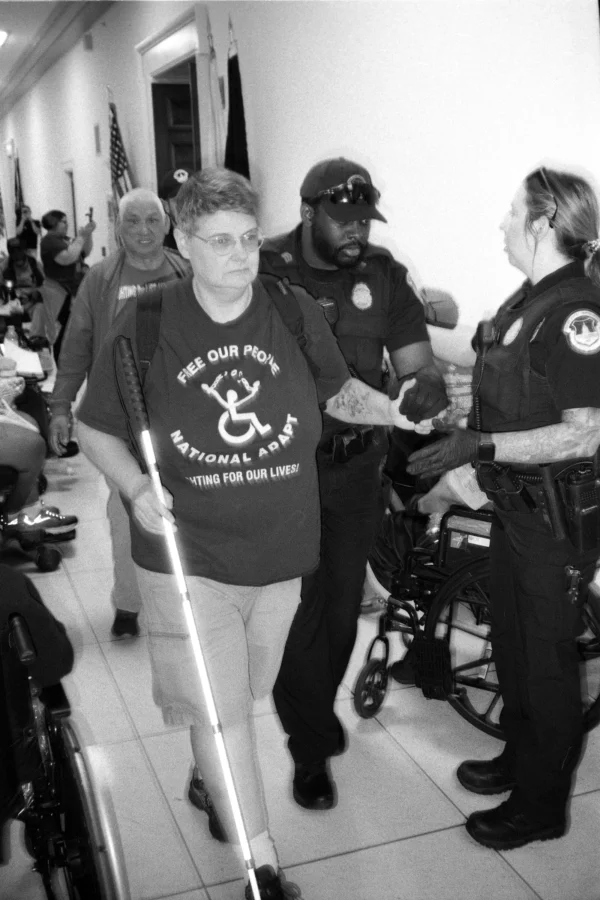
Photo: Nolan Trowe, The New Yorker, May 19, 2023
Activists continue to grapple with visibility as silence on disability pervades American culture.
By Wendy Kozol
In a bustling hallway lined with American flags, a white woman stands prominently in the frame, her tee shirt boldly proclaiming “free our people” above an emblem of a person in a wheelchair, holding their chained hands high. Behind her, a black male police officer seems to guide her left hand while a white female police officer to her left gestures towards us.
The image was taken by Nolan Trowe, who photographed a disability protest in the halls of Congress from the wheelchair he has used since a 2016 accident. The New Yorker profiled Trowe and his images in a report about the protest.
The woman in the picture, a member of American Disabled for Attendant Programs Today (ADAPT), was one of fourteen arrested in the May 2023 action in Washington, D.C., denouncing budget cuts tied to proposed legislation to raise the debt ceiling.
From Trowe’s lowered angle, the impression of forward momentum created by the mobility cane in her right hand and the police officers’ gestures is further underscored by the person with white hair walking behind the main group.
Using tactics popularized by social movements of the late 1960s and 1970s, ADAPT has been staging sit-ins, protests, and press conferences since 1983, when this activist collective pushed for accessibility on public transportation. Since then, the group has branched out to advocate for various issues affecting its diverse communities.
Every year, Congress seems on the brink of shutdown over the debt ceiling, only to be rescued at the last minute by harmful compromises too quickly silenced by the relief that the United States did not default on their financial obligations.
ADAPT’s May protest aimed to break that silence by making visible the so-called “collateral” damage that would include cutting the housing voucher program in half, imposing work requirements on those covered by Medicaid, and eliminating much of the Head Start program (the most successful and enduring program from the Johnson administration’s Great Society). Even cost-saving measures like closing Social Security field offices would have profound implications for those who struggle to get to the nearest office because of mobility issues, poor transportation access, and work demands.
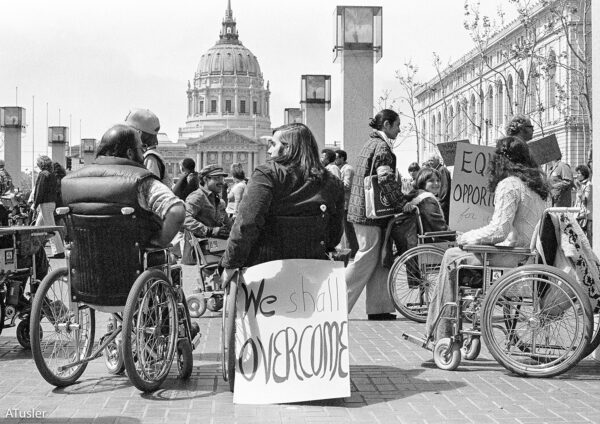
Section 504 protesters gathered at UN Plaza in San Francisco to protest government indifference and to insist that Section 504 regulations be signed. Photo: Anthony Tusler, April 1977.
Black and white photographs of protests in front of government buildings, sit-ins clogging hallways, and arrests of disabled protestors have filled news and documentary archives since the 1970s. For instance, Anthony Tusler’s 1977 photograph features several protestors in wheelchairs in the foreground, holding handmade signs demanding equal rights and opportunities, while San Francisco’s City Hall looms behind a large crowd.
Media circulation of photographs like this brought national attention to what historians now recognize as one of the foundational moments in the Disability Justice movement.
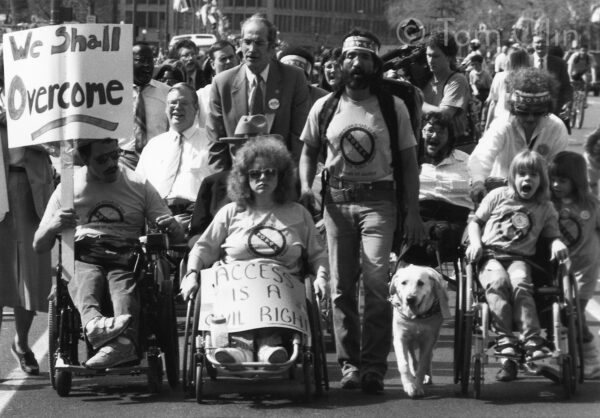
The March 12, 1990, march to the Capitol that led to the Capitol Crawl and subsequent passage of the Americans With Disabilities Act. Photo: Tom Olin Collection
Fast forward to the 1990 protest to pressure Congress to approve the Americans with Disability Act, where black and white photographs such as this one by Tim Olin feature protesters in wheelchairs leading a march and carrying handmade signs. These archival photographs contain the visual traces of multiple efforts to gain the visibility that activists have been demanding of the American public for decades.
Trowe’s black and white photography continues the tradition; from his wheelchair perspective, disabled activists take center stage in pictures that echo those of the archive. His compositions and content emphasize what Trowe identifies as protesters’ “power and grace in the face of” police “roughing them up.”
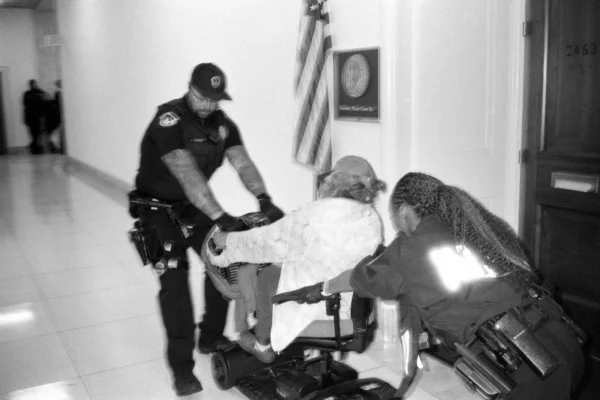
Photo: Nolan Trowe, The New Yorker, May 19, 2023
For instance, here, he captures activists’ strategic play on cultural stereotypes about the vulnerabilities of disabled people. A black male police officer strains to pull a person’s electric wheelchair, which has become dead weight after being powered off. At the same time, a black female police officer in the lower right corner of the composition lunges as she pushes the chair from behind. The dynamic of the diagonal and the blurred motion capture the intense tug-of-war: the officers pushing hard and the protestors determined to make them exert maximum force to clear the hallways.
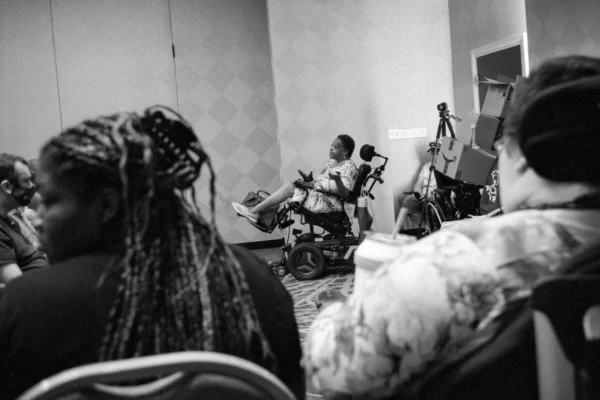
Photo: Nolan Trowe, The New Yorker, May 19, 2023
Trowe describes his compositions as foregrounding “elbows, buttocks, feet, and hands clutching phones,” a strategy that puts us in the same space as the activists. This image, for instance, positions the viewer to gaze with the camera over the shoulders of seated observers at a black woman in a wheelchair, gesturing as she speaks at a press conference.
In the center of the composition, this woman’s claim of voice and visibility demands a recognition of her presence. At the same time, she appears isolated, a poignant visual metaphor for the cultural invisibilities of so many disabled people.
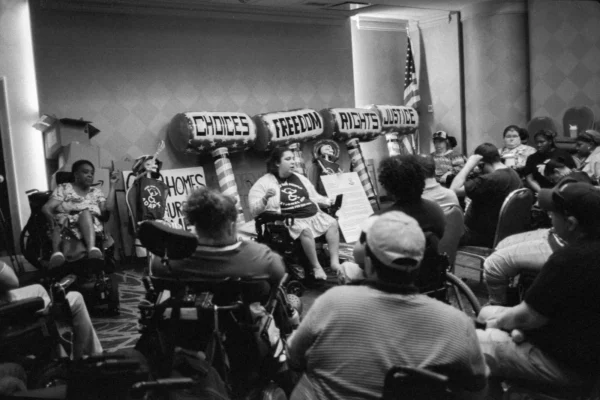
Photo: Nolan Trowe, The New Yorker, May 19, 2023
Trowe’s photographs toggle between images of isolation and group action, as in this photograph of the same woman sitting with her colleagues at this same press conference. He tightly crops the frame so that the camera gazes over the shoulders of seated audience members at several activists while behind them handmade signs call attention to the devasting impacts this legislation will incur.
Today, as in earlier decades, visibility remains a constant struggle for activists as all sorts of silences about disability permeate American culture. Visibility also is essential for activists attempting to alert the American public of the needs of underrepresented communities poorly cared for by the meager resources of the U.S. social safety net.
Frustratingly, The New Yorker was the only national news outlet to report on this action despite the massive news coverage of the debt ceiling crisis. Even Teen Vogue, which provided an otherwise thorough report on this legislation’s impacts on poor communities of color, remained silent on the implications for disabled people.
Trowe’s reliance on visual traditions to portray disability activists underscores the enduring resilience of disabled communities while highlighting the persistent silences and invisibilities many continue to endure.
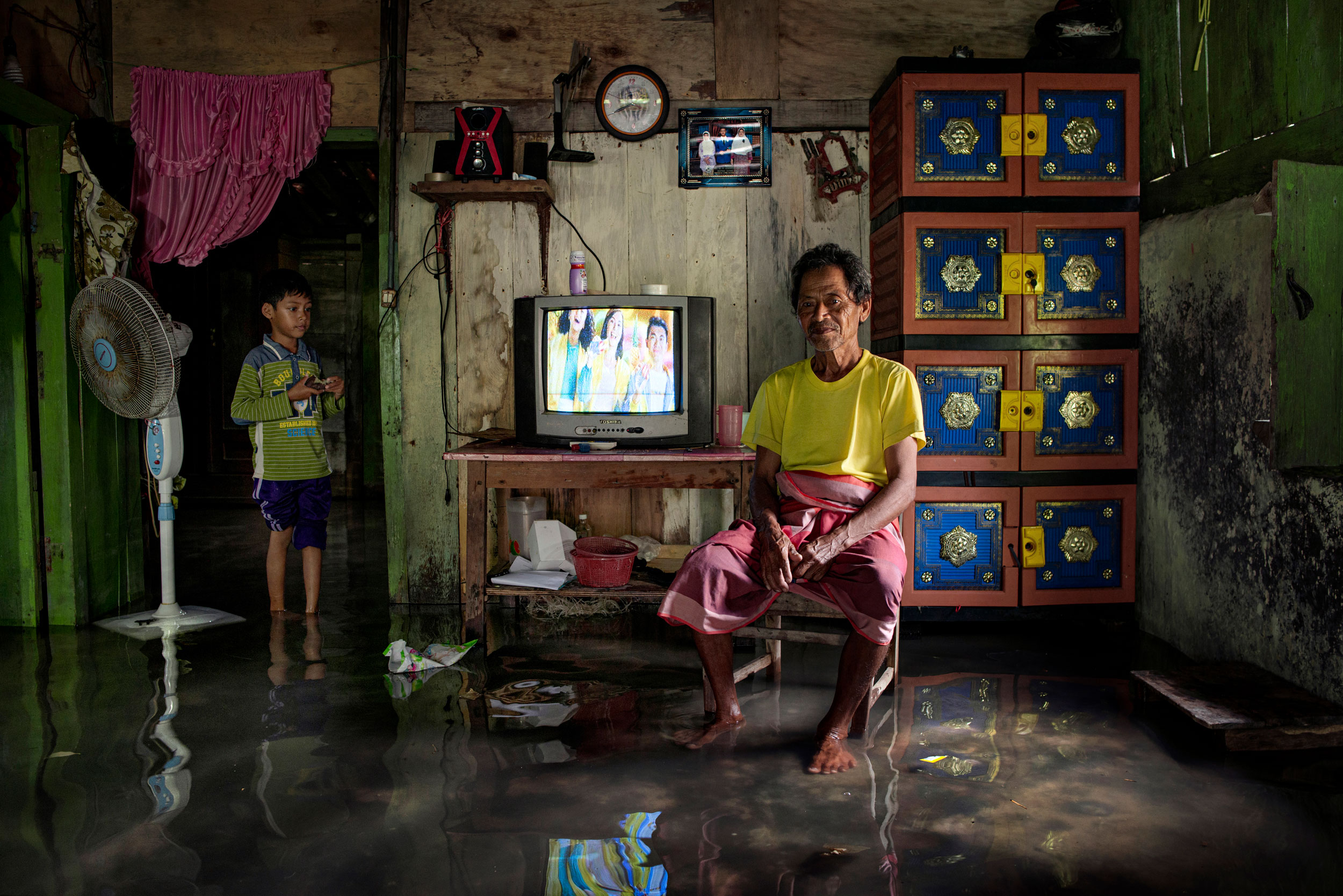
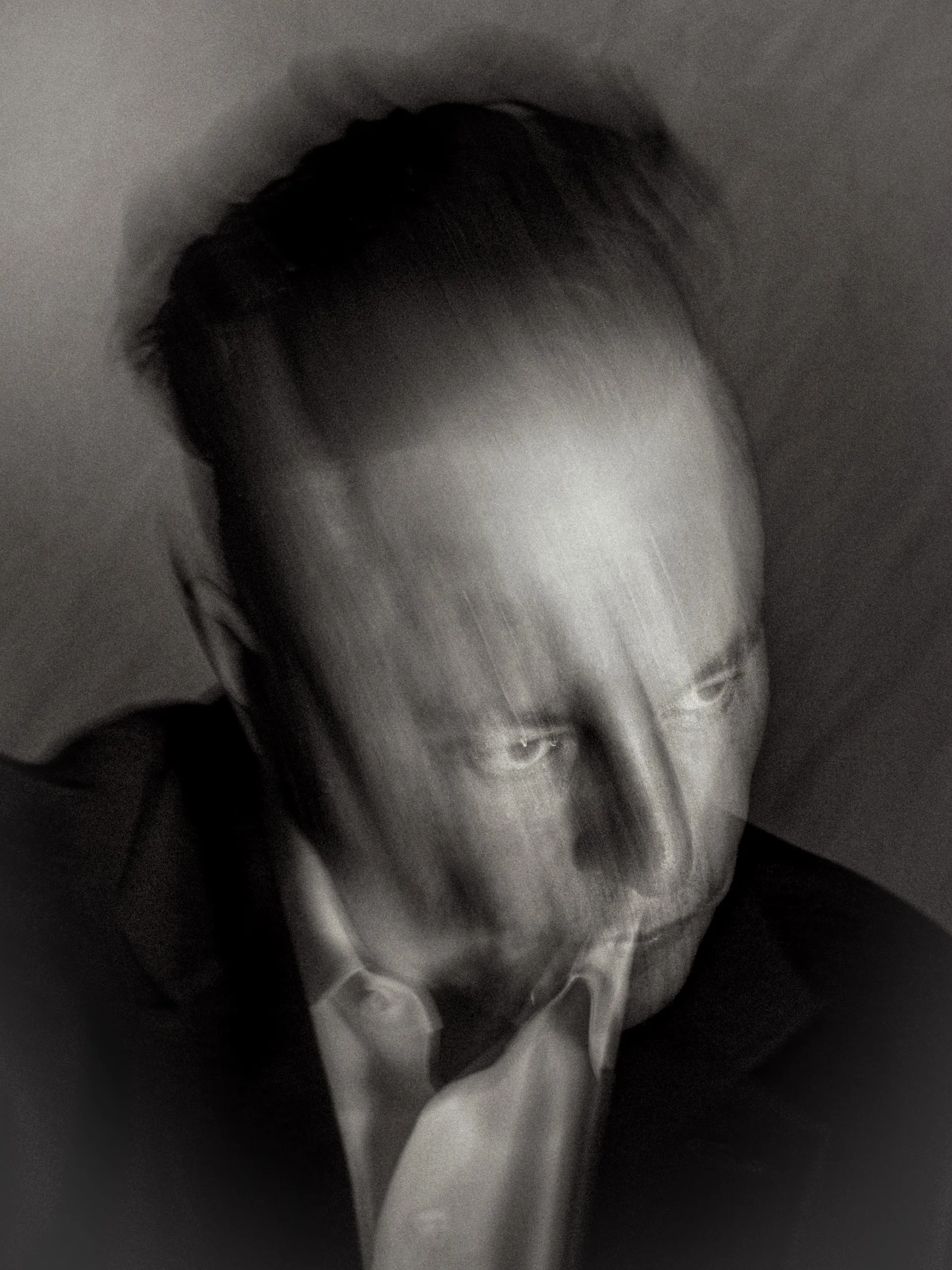
Reactions
Comments Powered by Disqus